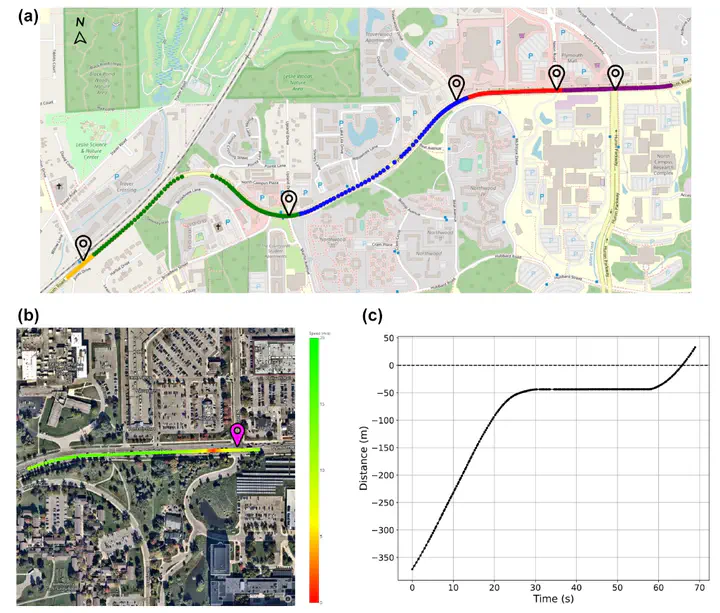
Abstract
With the rapid development and deployment of vehicle sensing and communication technology, vehicle trajectory data is becoming increasingly available for urban traffic network applications. However, it is difficult to use raw trajectory data points generated from global navigation satellite system (GNSS) coordinates without matching them to traffic networks. Real-world trajectory data is also prone to noise and errors. This paper proposes a trajectory data processing pipeline to serve different urban traffic network applications. The steps of the pipeline include matching the trajectory points to a well defined network representation, splitting them into different movements, and extracting distance information from their GNSS coordinates. Smoothing and filtering algorithms also reduce the influence of noise and errors. Based on the processed trajectory data, this paper also proposes algorithms for calculating different mobility performance indices including vehicle delay, number of stops, space-mean speed, and coordination measurements. These performance indices provide comprehensive evaluations of urban traffic network from different perspectives. Our case study uses real-world trajectory data collected from the Ann Arbor Connected Vehicle Test Environment. Different mobility performance indices are calculated and visualized. The proposed methods and algorithms are efficient, robust, and scalable, and could be applied to large-scale urban traffic networks.